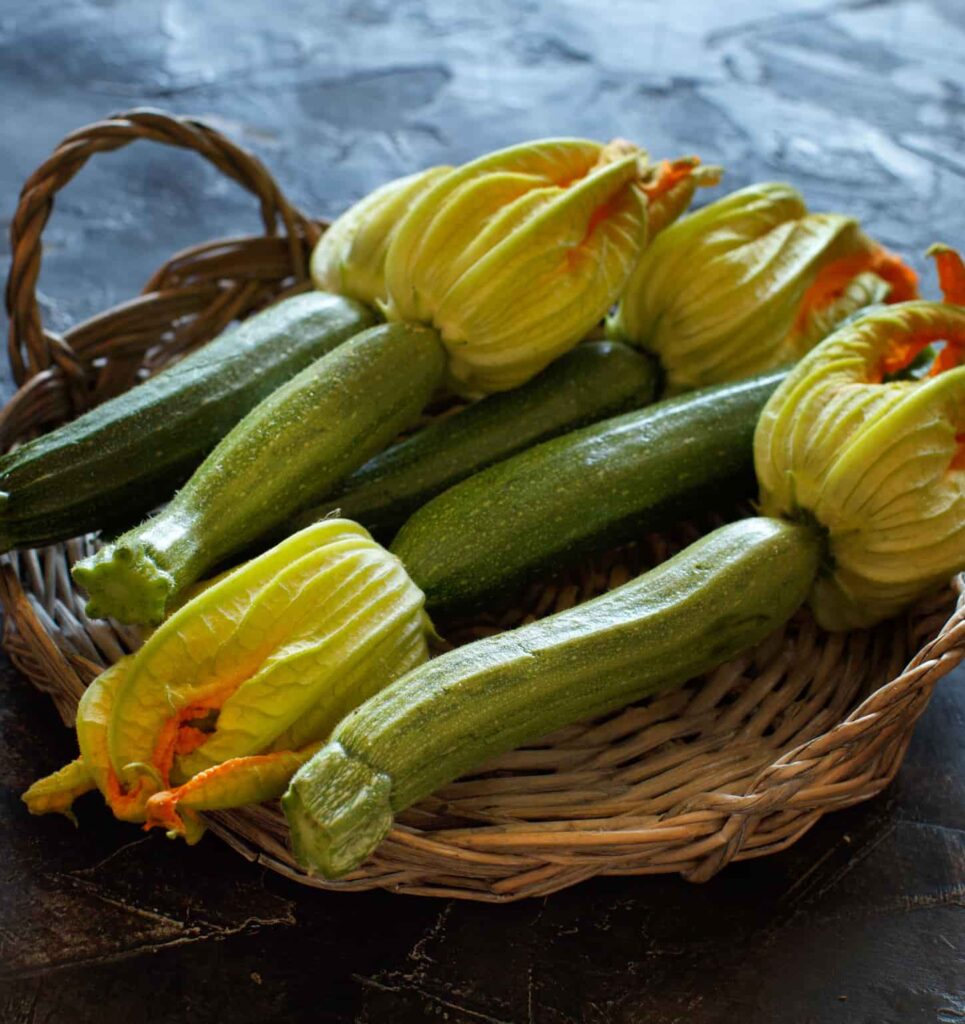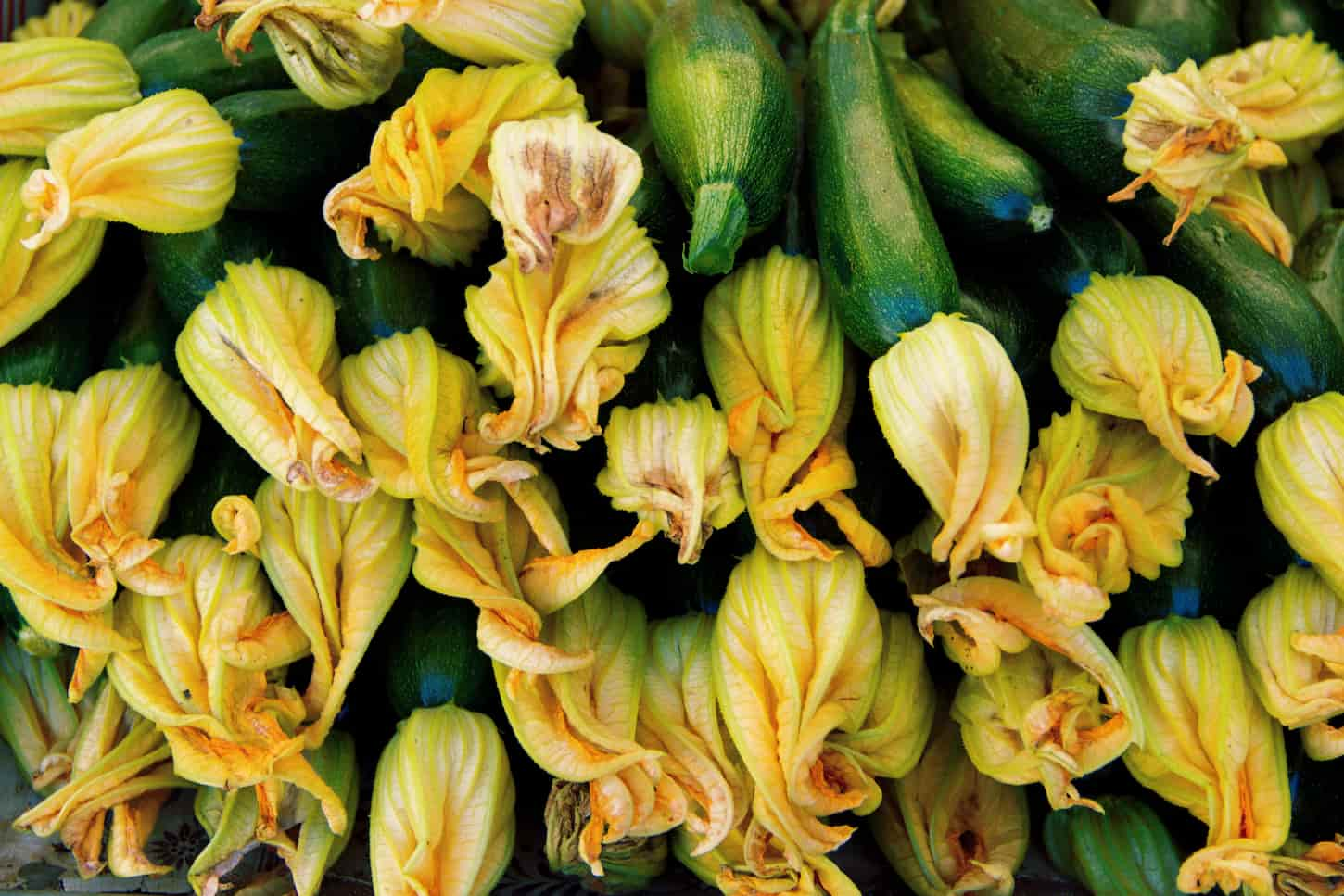Every gardener who grows zucchini has experienced this problem at one point; you see all your hard work come to fruition. There is finally a fruit growing out of that beautiful blossom on the end of the vine. Then out of nowhere, it hits. Blossom end rot. You probably wonder to yourself why this is happening; how can you stop it? And especially, can you eat zucchini with blossom end rot?
Zucchini afflicted with blossom end rot are edible if you cut off the end portion that is soft and rotten. Eating the zucchini with end rot may not be problematic, but the texture and taste are affected to the point that it doesn’t taste good to most people.
That being said, there are some things you’ll want to consider, such as if the zucchini is being shredded and frozen. In that case, you may not need to be as generous about cutting out the end rot as if you’re planning to slice and eat the zucchini right then and there.
Ready to discuss all the things? Let’s do this.

Is It Safe to Eat Zucchini with Blossom End Rot?
This is a common issue but considering we’re talking rot, we also have to consider, is it safe to eat the affected fruit? The answer is yes, but you should use discretion. When a zucchini develops blossom end rot, it doesn’t take long for the entire fruit to become affected.
Consider the following when choosing if each particular zucchini with blossom end rot should be eaten.
- Does a large percentage of the zucchini have rot?
- Is the zucchini faded in color compared to the rest of your crop?
- When you apply pressure to the zucchini or slice into it, are the insides softer than normal?
If the answer is yes to any of the above questions, it is best to just discard it.
When only a small part of the zucchini has rotted, simply cut off the end that is rotten and eat as usual.
Want to know the answer to Why Are My Zucchini Turning Yellow and Rotting? I’ve got answers and 6 prevention tips in this article for you.
While it is still edible, it certainly won’t taste quite as good as a normal, healthy fruit. Blossom end rot causes the fruit to not reach maturity. This means it is lacking nutrients that other mature fruits would have, and therefore, its taste is not as good.

Can Animals Eat Zucchini with Blossom End Rot?
Zucchini with blossom end rot is safe for animals to eat as well if zucchini is considered a safe food for the species in question. If zucchini isn’t safe for the animal, then it shouldn’t eat zucchini with blossom end rot.
So, for example, if you’re a homesteader and have some chickens in the backyard and don’t want to use the affected food for your own meal, remove the rotted bits and share the rest as a treat for your hens.
Can You Eat Other Squash with Blossom End Rot?
Squash with blossom end rot is generally safe to eat, although it will taste, store, and be more delicious if the affected area is removed from the food beforehand. Blossom end rot is a disfiguring condition more than anything else.
Other types of squash are equally likely to have this same issue because they are blossoming plants. You can eat other squash with blossom end rot. Remove the affected fruit from the plant immediately when you notice it and ask yourself the same questions listed above.
Can You Eat Other Garden Produce with Blossom End Rot?
Blossom end rot (BER) is mostly a disfiguring issue rather than a safety issue for most produce. Even so, most garden produce with BER can be eaten, though it is safer and the food will taste better if the end rot is removed prior to eating.
There are many other types of garden produce that can have this same problem. Some of them are from the nightshade family (but are edible for humans).
- Tomatoes
- Eggplants
- Peppers
These plants are all susceptible to blossom end rot, but don’t let this stop you from planting all these delicious fruits and veggies in your garden. There are ways to avoid it, and even if your plants do end up getting blossom end rot, it’s not the end of the world. Once you remove the affected fruit, there are ways to treat the problem, so it doesn’t spread to the rest of your plant.
Is Blossom End Rot Reversible?
While blossom end rot isn’t completely reversible, it is a treatable and manageable condition. Afflicted fruit can’t be “cured” (remove affected areas before consumption) but removing afflicted produce quickly can help prevent the spread of the issue to other produce and plants.
Blossom end rot is caused by a calcium deficiency. It means your plant has been unable to take in the appropriate amount of calcium from the soil to mature its fruit properly.
Here are some steps to follow to stop the spread.
Things to do when your plants have blossom end rot:
- Remove the affected fruit as soon as you notice that blossom end rot is present. This can help prevent it from spreading to other fruits on the plant as well as other plants in your garden.
- Adjust your watering schedule so that water levels are maintained. Irregular watering makes it hard for your plants to take in the right amount of calcium from the soil. Unsteady moisture levels are thought to be the biggest issue causing blossom end rot.
- Test your soil for calcium levels. Most of the time, it isn’t necessary to actually adjust the calcium in your soil, but in some cases, this could help. You can adjust calcium in your soil by:
- Add crushed eggshells to the soil near the base of your plant before you water it can help raise the calcium level in your soil.
- Applying gypsum to your soil can lower the pH levels and has the opposite effect that eggshells would have.
- Cut back on fertilizer. Sometimes overfertilizing your soil can create high levels of nitrogen, which also make it difficult for a plant to take in calcium. This too can lead to blossom end rot.

Key Takeaways and Next Steps
Let’s go over what we learned. A little TLDR, if you will (that’s “too long, didn’t read” or what the interwebz calls a summary, mom).
- You can eat zucchini with blossom end rot if the fruit itself isn’t too overtaken by rot, the color isn’t faded, and it doesn’t feel softer than normal. Just cut off the rotted end. Remember the taste will not be quite as good, so feel free to share it with your animal friends if you don’t want to use it yourself.
- Blossom end rot can be found on other types of plants as well, including tomatoes, eggplants, peppers, and other kinds of squash.
- You can treat blossom end rot by removing all affected fruit immediately upon discovery, maintaining a regular watering schedule, and testing and adjusting your soil’s pH if necessary, but this last step is rarely needed. It may not go away entirely, but you can take these steps to curb its progression and assure you will still get some great healthy fruit to harvest for your table.
Next up, make sure you read my article on the reasons why zucchini rots, and get the 6 prevention tips you’ll need to avoid never having enough zucchini growing ever again. Then, enjoy this picture of tomatoes with end rot and I’ll see you in the next article!
Resources
Learning from your own experience is essential, but learning from others is also intelligent. These are the sources used in this article and our research to be more informed as homesteaders.
- “Blossom-End Rot.” Almanac.Com, www.almanac.com/pest/blossom-end-rot. Accessed 27 Jan. 2022.
- CaliKim. “Growing Zucchini Containers and Controlling Blossom End Rot and Powdery Mildew | CaliKim Garden & Home.” CaliKim Garden and Home DIY, calikimgardenandhome.com/growing-zucchini-containers-controlling-blossom-end-rot-and-powdery-mildew. Accessed 27 Jan. 2022.
- “The Fruit on My Zucchini Squash Begin to Grow, but Quickly Turn Brown and Rot. Why | Horticulture and Home Pest News.” Iowa State University Extension and Outreach, hortnews.extension.iastate.edu/faq/fruit-my-zucchini-squash-begin-grow-quickly-turn-brown-and-rot-why. Accessed 27 Jan. 2022.
